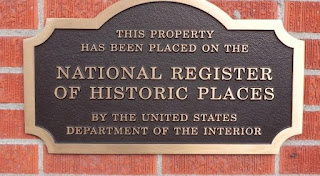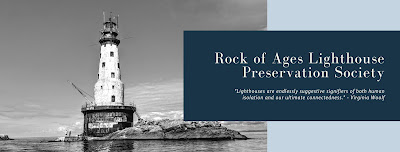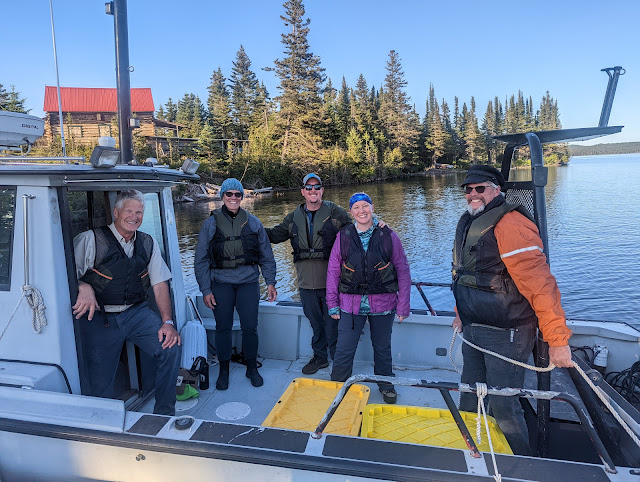A Look Back - Both Far and Near
Here at home, having made the six hour trip back from Grand Portage, I’m giving thought to what may be taken from three weeks in an island National Park supporting a history preservation group working to bring the experience of a 20th century lighthouse to the public. Aside from being one of the most satisfying, therapeutic, nostalgic volunteer experiences of my retirement career, it’s also a thought provoker on the significance of history preservation.
Why restore a 115 year old lighthouse planted on a rock at one end of a very large island in the middle of Lake Superior in the first place? Whom does it serve? The National Park Service? Why? The volunteers who make it happen? That’s a pretty small group in the end. Visitors to the park? That starts to make some sense.
For that matter, why is historic preservation a thing? According to the National Historic Preservation Act of 1966, “The Congress finds and declares that — 1) the spirit and direction of the Nation are founded upon and reflected in its historic heritage; and 2) the historical and cultural foundations of the Nation should be preserved as a living part of our community life and development in order to give a sense of orientation to the American people…”
“A sense of orientation.” It also seems to help in providing a sense of perspective. What kind of challenges, burdens, and suffering did those before us endure. What did they value, and how did they spend their time (without screens and interwebs). Can we really understand how life has changed and in which direction without a baseline, some anchor point in the past from which to measure? Would our perspective about “progress” be any different if we had a clear view of what life was like in the decades, let alone centuries before? Would we obsess about the suffering of today as much if we were able to contrast that with the level and degree of suffering and burden in the past?
How did labor and engineering achieve the planting of a lighthouse on a small rock that would withstand more than a century of battering by ice and wave at a time when calculations were done with a slide rule or a thumb, or without the benefit of hydraulics and power tools to assist? What was it like to listen to Lake Superior waves reach up to the highest windows in a 137 foot tower with a deafening crash, or to wait to be relieved when ice formed around your home and you were down to your last few cans of food, never really sure the ship would make it before winter marooned you on that rock?
What did it take to capture enough fish to make a living when even motors were not yet available to propel the boats, or lift the nets, or process the fish? When all of that had to be done by shear force of human muscle, in terrible weather conditions. What were the comforts of life when living across an inland ocean, hundreds of miles away from any road or town? How certain was food supply, or available health care, or certainty of income? How does all that compare to current times?
Preserving a model of those conditions of the past that can be witnessed by inhabitants of the present should help facilitate some appreciation for all the progress made over those years, and for the relative wealth and convenience we all share in this day and time. History feeds natural curiosity about what occurred before, what formed the world around us. It’s worth capturing and preserving physical artifacts to bring some of it to life.
For any interest, here are some links that further elaborate on these points:
Volunteers play a critical role in supporting remote preservation projects. Costs are higher, with projects more complex, so donor and foundational funding are often not enough. Labor is a big part of the cost profile, especially if a restoration includes returning the asset to the condition it was in decades earlier. More than likely, earlier practical renovations need to be removed or scraped away, involving simple but time consuming labor.
Setting up and managing a project like the Rock of Ages Lighthouse is a complex endeavor. First of all, there’s the political side, since it is located inside a National Park, which is managed by a federal bureaucracy that serves lots of constituencies with a lot of competing demands and needs that extend well beyond their annual budgets. A strong partnership with the National Park Service is foundational, and requires a lot of planning and documentation and communication.
Structuring the project for success requires understanding the constraints of time (only seven weeks a year are available to perform the work), budget, and weather. Planning needs to take into account project complexity, volunteer competencies, and long range strategic intentions. Having the right kind of people, with the right supplies, at the right time is quite a juggling act that calls for strong leadership and administration. Fortunately, ROALPS has such competency.
There’s lots of opportunity to preserve historical perspective in Washington Harbor, starting with the Rock of Ages. I look forward to being a small part of the volunteer workforce advancing that potential in the future.







😎
ReplyDelete